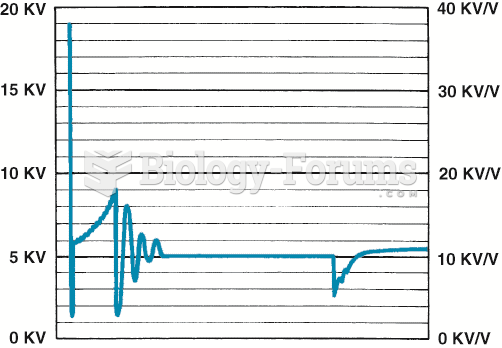|
|
|
Nearly 31 million adults in America have a total cholesterol level that is more than 240 mg per dL.
Normal urine is sterile. It contains fluids, salts, and waste products. It is free of bacteria, viruses, and fungi.
Urine turns bright yellow if larger than normal amounts of certain substances are consumed; one of these substances is asparagus.
Egg cells are about the size of a grain of sand. They are formed inside of a female's ovaries before she is even born.
All patients with hyperparathyroidism will develop osteoporosis. The parathyroid glands maintain blood calcium within the normal range. All patients with this disease will continue to lose calcium from their bones every day, and there is no way to prevent the development of osteoporosis as a result.







